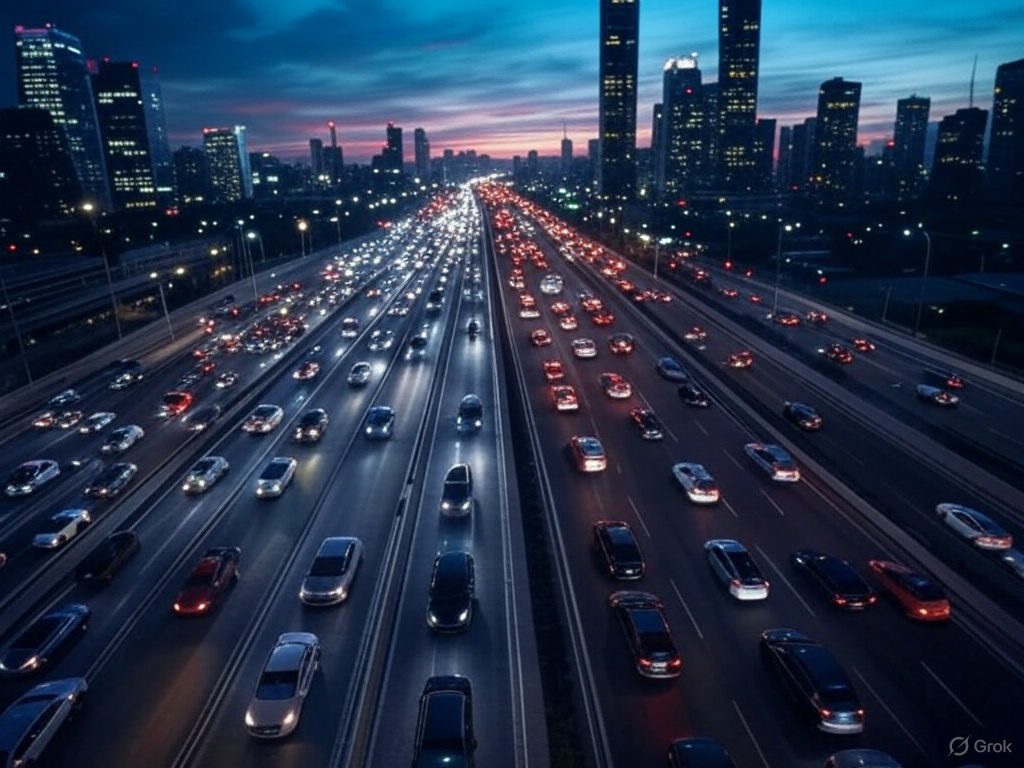Smart Intersections: How AI is Changing Traffic Management
What Are Smart Intersections?
Imagine a traffic light that doesn’t just blink on a timer—it thinks. Smart intersections use sensors, cameras, and artificial intelligence (AI) to manage traffic in real time for traffic management. Unlike traditional signals with fixed schedules or basic car detectors, these systems adapt instantly to what’s happening on the road. They count vehicles, track speeds, spot pedestrians, and adjust light timings to keep traffic flowing smoothly. Picture an ordinary traffic signal upgraded with IoT sensors, radar, and cloud-connected AI—a system that responds to live conditions rather than following a rigid script. Traditional intersections rely on preset patterns or simple triggers, like loop detectors that sense a waiting car. Smart intersections go further, sensing the full scene—traffic volume, weather, even nearby accidents—and optimizing signal timings accordingly. They can also “talk” to other intersections and connected vehicles, creating a network that cuts delays, boosts safety, and improves efficiency.How AI Powers Traffic Signal Control
AI is the brains behind these intersections, turning raw data into smarter decisions. Here’s how it works:- Real-Time Sensing: Cameras, radar, and LiDAR track everything—cars, bikes, pedestrians, even buses—feeding live data to the system. Maryland’s smart signals, for instance, monitor “every single object” at an intersection, adapting to the moment.
- Pattern Prediction: AI spots trends—like rush-hour jams or post-game surges—and predicts congestion before it builds. Pittsburgh’s SURTRAC system, developed by Carnegie Mellon University, uses this to tweak timings proactively, learning from past traffic to get sharper over time.
- Adaptive Timing: Forget fixed cycles. AI adjusts green and red durations based on demand, extending lights for busy roads or shortening them when no one’s around. It even syncs with nearby signals for “green waves,” letting cars glide through multiple lights without stopping.
- Vehicle-to-Everything (V2X) Communication: Smart intersections chat with connected cars wirelessly. A signal might warn a driver to slow down for a green light ahead, or an ambulance could request priority, clearing its path. This two-way talk enhances flow and safety—imagine a light holding cross traffic because it “knows” a pedestrian’s still crossing.
Real-World Examples
- Pittsburgh (SURTRAC): Since 2012, this Carnegie Mellon-developed system has cut wait times by 40%, travel times by 25%, and emissions by 21% across dozens of intersections. Drivers notice smoother rides without new roads.
- Maryland (NoTraffic): In 2024, Baltimore-area intersections got AI upgrades to handle bridge-closure detours. Cloud-connected sensors now ease backups by adapting to real-time demand, with plans for wider rollout.
- Nashville: A $158 million plan will modernize 592 signals with cameras and AI by the 2030s, aiming for 10% faster travel. Officials call it an “iPhone 16” upgrade for outdated tech.
- Beyond: Los Angeles syncs 4,500+ signals with AI, saving 9.5 million driver hours yearly. Seattle and Google are cutting idling with smartphone data, while Singapore and Hangzhou use AI to manage entire city grids.
Benefits of AI-Driven Smart Intersections
- Less Congestion: Adaptive signals slash delays—Pittsburgh saw 25% shorter trips, LA 12%. Green waves keep traffic moving, easing commuter frustration.
- Safer Roads: Better timing curbs red-light running, while pedestrian detection prevents crashes. V2X can even warn cars of hazards, supporting “Vision Zero” goals.
- Faster Response: Ambulances get green lights automatically, and buses stay on schedule with priority timing, speeding up critical services.
- Greener Streets: Less idling means lower emissions—Pittsburgh cut 21%, LA saw citywide gains. Prioritizing bikes and transit nudges cities toward sustainability.
Challenges and Considerations
- Cost: Upgrading signals isn’t cheap—Nashville’s overhaul costs $158 million, Pittsburgh’s $20,000 per intersection. Grants from agencies like the U.S. DOT help, but funding competes with other needs.
- Privacy: Cameras spark concerns about surveillance. Cities must anonymize data and secure systems against hacks to maintain trust.
- Compatibility: Different tech standards (e.g., DSRC vs. C-V2X) and vendor systems need to mesh. Open protocols are key to avoid a patchwork network.
Future Outlook: Smarter, Safer, Greener Streets
AI traffic management is just starting. As self-driving cars grow, they’ll sync with smart signals for near-zero delays and crashes. Citywide systems—like Hangzhou’s “City Brain”—could soon orchestrate lights, speed limits, and routing apps together. Safety could soar with V2X warning drivers of risks, while efficiency gains cut fuel waste—Google’s tests hint at cleaner air ahead. Collaboration between cities, tech firms, and automakers will drive this future, turning intersections into hubs of a smarter urban network. In short, smart intersections are redefining traffic control. Early wins in Pittsburgh and beyond show they can ease gridlock, save lives, and green our cities. Challenges remain, but as costs drop and tech matures, expect AI to light the way for urban mobility’s next era.Sources: Carnegie Mellon University, U.S. DOT, city transportation reports from Pittsburgh and Maryland, Honda and Google insights.
Disclaimer: This article is for general informational purposes only.
Learn more about traffic cones, traffic signs, barriers, high-visibility gear and other traffic safety solutions at TrafficSafetyStore.com. You can also explore our wide range of Road Flares and Roadside Emergency Kits, and Warning Triangles to find the right fit for your specific needs.

